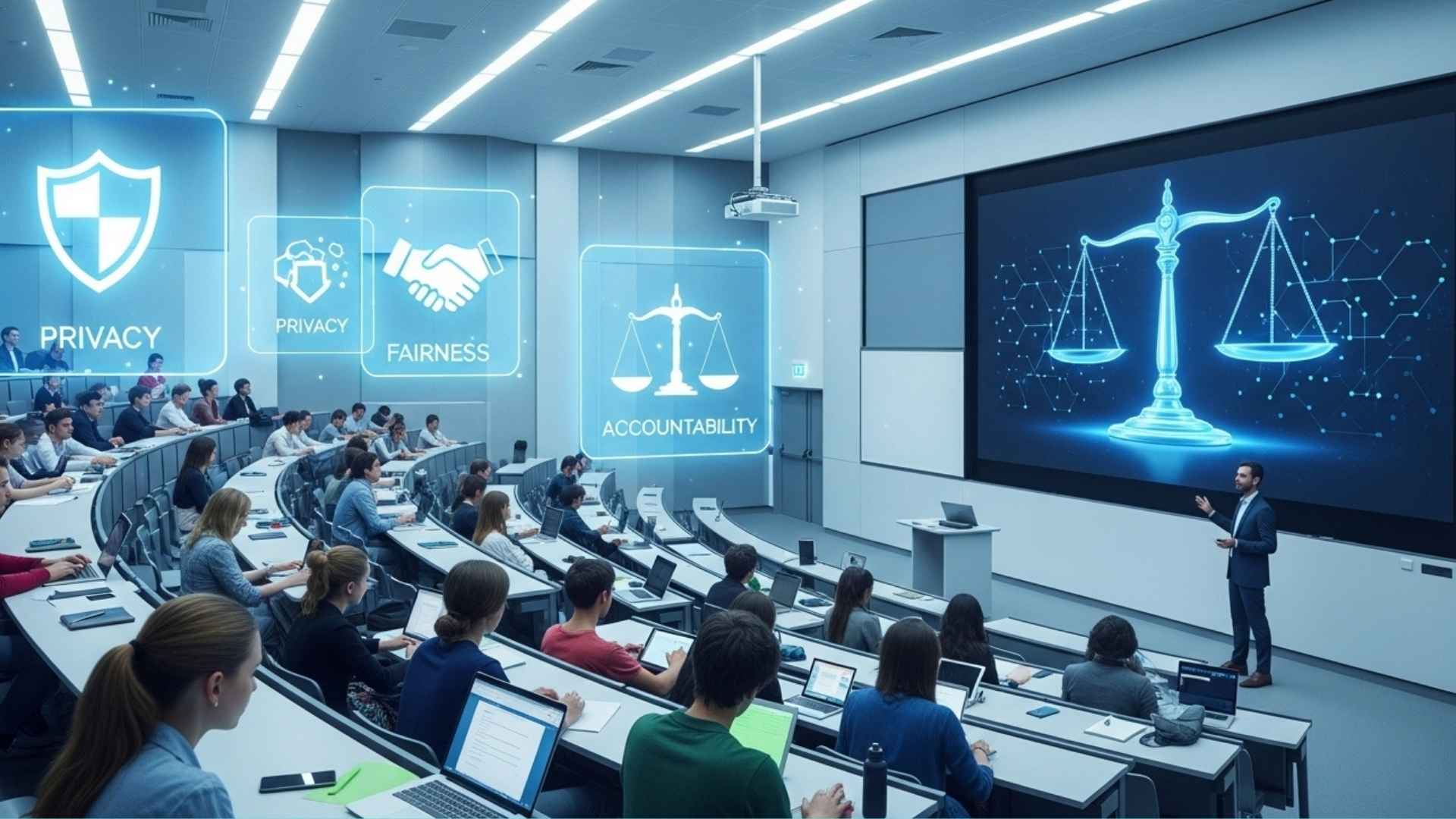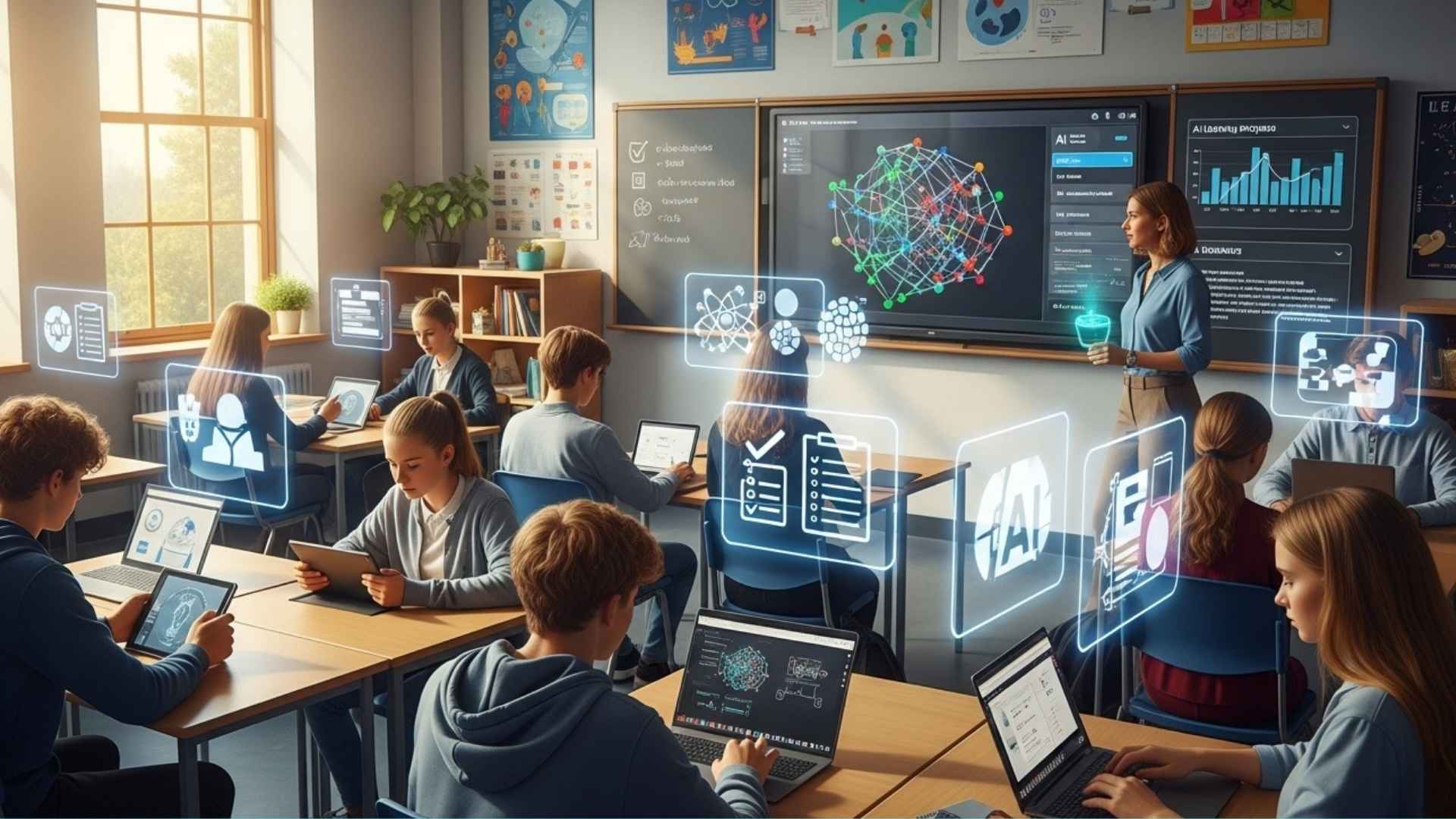Every educator needs to learn about artificial intelligence (AI) and how it can benefit their students and improve their own work.
To provide the best possible education for our students, we need to understand how this technology will impact them and us. What better way to learn about AI than through new tools in the field of education?
Teachers need to understand AI tools
The role of teachers has changed over the years. Especially when it comes to powerful technologies like AI, there can be some hesitation.
Our schools need to provide opportunities for students to learn about this new technology, as AI can have a profound impact on their future. Not only can AI tools enhance creativity and productivity, but they can also provide teachers with valuable insights into student learning. They can also help with some of the tasks that can be time-consuming.
With all the benefits of AI, it’s important to take the time to talk about artificial intelligence (AI) in the classroom. We don’t just teach the subject, we also act as mentors, facilitators of the learning process, and co-learners with students. This is especially important when using such powerful new technologies.
It’s also important for us to teach students about the benefits of AI and show them how to use these tools appropriately, responsibly, and ethically.
How can AI improve a teacher’s job?
Personalized learning models: Educators can create personalized learning experiences based on AI-driven analytics that provide insights into student performance and learning paths. Using this information, AI can instantly adapt learning materials to students. Teachers can then use the data to create personalized learning experiences that are tailored to each student’s strengths, weaknesses, and learning pace.
Productivity and efficiency: AI can help teachers become more efficient. Educators are responsible for writing tasks such as communicating with students and their families, grading, and providing feedback. As a result, teachers find themselves spending more time on writing tasks than directly working with students and their teachers. The right AI tools can help automate or streamline these tasks, freeing up teachers to spend more time with their students.
Creating and enriching learning materials: Through AI-powered platforms, teachers can manage a variety of educational resources. Especially with generative AI, teachers can create lessons, activities, assessments, discussion prompts, and presentations simply by giving a short prompt containing keywords.
7 AI Tools For Teachers
Here are 7 AI-powered tools that can help teachers improve their teaching methods, make them more effective, and save time. They can help you create personalized writing and presentations. These tools can also help you create slides, saving you time and allowing you to focus on the content.
I also like that these tools offer translation options, a variety of templates, and resources that educators often use.
1. AudioPen
For years, I’ve used voice-to-text to write blogs, books, emails, and tutorials. It’s an AI-powered web app that you can use on your computer or phone.
The app takes what you say and makes it better when it comes to text. It can also be customized to your needs.
2. Canva Magic Write
Canva has introduced an AI text-to-image generator called Magic Write. It can help you boost your writing creativity. Magic Write can also help you with ideation, brainstorming, and lesson planning. This makes it a useful tool for teachers to use when creating classroom presentations or other visuals.
Magic Write can help teachers with writing tasks such as brainstorming, lesson planning, and creating visually engaging presentations in a short amount of time by analyzing word prompts.
3. Curipod
This website allows teachers to create interactive lessons in minutes using AI.
Students can study a variety of topics, and the power of AI can create customized lessons that meet their learning needs.
Teachers simply enter a topic and a ready-to-run lesson comes out, complete with text, images, and activities like polls, open-ended responses, and word clouds. They can even create activities that focus on SEL check-ins.
4. Eduaide.Ai
This is an AI-assisted lesson-development tool. It gives educators over 100 resource types to choose from to create high-quality learning materials. It also instantly translates the content they create into over 15 languages.
Educators can create lesson plans, create prompts for discussions, use a “teaching assistant” to create individual learning plans for students, write emails, or organize accommodations lists for students.
Eduaide.Ai also includes a content generator, teaching assistant, feedback bot, free-form chat, and assessment builder.
5. OpenAI
The recently released Teaching with AI Guide for Teachers was created to help teachers use ChatGPT in their classrooms. The guide includes a number of suggested prompts and explains how ChatGPT works and what its limitations are.
It also highlights the importance of checking data and checking for bias. ChatGPT 4 (the paid version) has improved the accuracy and reliability of the data compared to the original version.
6. Quizizz
With Quizizz, teachers can design quizzes that create personalized learning paths based on each student’s answers.
Teachers can also create lessons with Quizizz. Quizizz is powered by AI, which allows it to adjust question difficulty, check grammar, and redesign questions to match real-world situations. More features are on the way.
7. Slidesgo
This tool uses free templates from Google Slides and now includes an AI Presentation Maker. With this new feature, you can create presentations in minutes.
You can simply choose a topic and choose a tone like casual, creative, or professional, and then download your presentation. This is definitely a time saver.
Also Read: How to Use ChatGPT for Student Feedback: A Complete Guide
Final Thoughts
Creating and sharing these resources with students can lead to interesting discussions about the benefits of AI and how this technology can be used appropriately for creativity and learning.
There are many tools that can help in each of the key areas I have mentioned. The most important thing is to choose a tool to start using and consider how it will impact your work.




